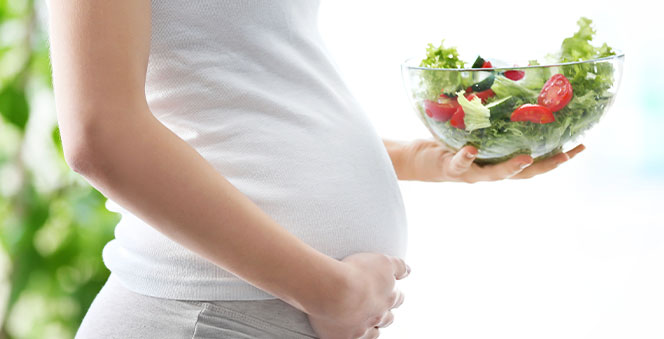WHAT TO EXPECT AND RECOVERY
A cesarean delivery, or C-section, can have a major effect on the mental and physical health of the mother in the weeks following the delivery. A C-section is a major stomach surgery.
The procedure can become lifesaving for both the mother and baby, but it may take a long time to recover afterwards.
WHAT TO EXPECT AFTER A C-SECTION
A good support network will speed up the recovery process.
Experts suggest that full recovery from a C-section generally takes 4 to 6 weeks. But every person is different, hence recovery time may vary. Studies shows that 60 percent of women experience some pain in the incision 24 weeks after delivery.
IMMEDIATELY AFTER DELIVERY
Most women going through a C-section get an epidural or spinal block. This form of anaesthesia numbs the body but the person is still awake.
It may take several hours to regain feeling after an epidural. You will not be able to walk or use the bathroom without help, immediately after the procedure.
THE FIRST 24 HOURS
The first 24 hours following a C-section has the same challenges just like vaginal delivery. These include adjusting to new parenthood, attempting breastfeeding. Women who undergo cesarean deliveries have to bear many different challenges.
You might have to stay in the hospital for 2 to 4 days for recovering from a C-section.
BLOOD CLOTS
One of the biggest risks of C-section is a blood clot. One might develop a blood clot in the leg. Women who are overweight or who remain immobile for long periods are more likely to have this.
Hence, it is advised for women to get up and move around as fast as possible.
CRAMPS
In the first 24 hours, it is absolutely normal to feel pain at the site of the incision. Many women also experience post-birth cramps as the uterus shrinks. These sensations are very similar to menstrual cramps, but can be more intense.
WATCHING FOR INFECTION
Nurses or doctors must carefully examine the cesarean incision for signs of infection. They will also check for vaginal bleeding. The uterus has to shed what is remaining of the pregnancy. Vaginal bleeding usually lasts for 4 to 6 weeks after delivery and is heaviest during the first days.
THE FIRST WEEKS
The risk of infection is highest during the first few weeks. Dangerous bleeding, which is known as a hemorrhage, is also more likely during this time.
People should avoid normal exercise for 6 to 8 weeks. Driving is also not safe for 4 to 6 weeks.
The wound may feel sore for 1 to 2 weeks. The symptoms can get better as the incision heals and the uterus contracts.
LONG-TERM RECOVERY
Recovering from a C-section takes time and may take longer than a doctor suggests. Some women may even experience muscle or incision pain for several months. Others struggle with urinary incontinence because of weakened pelvic floor muscles.
While these challenges are common, they should not be ignored. If any unpleasant symptoms persist even after the first postpartum appointment with a doctor schedule another appointment without hesitation.
7 TIPS FOR A FASTER RECOVERY
A C-section recovery can be sped up with the following methods:
1. GET PLENTY OF REST
Rest is very important for recovery from any surgery. Yet, rest is nearly impossible for you with a newborn in the home. Babies generally have irregular hours and may sleep for only 1 or 2 hours at a time.
You should always try to sleep when the baby sleeps, or ask for help from a loved one so that you can take a nap. It is essential to try to sleep as much as possible.
2. PROCESS YOUR EMOTIONS
Giving birth is a roller coster ride of emotions.
Women who had to undergo emergency deliveries or traumatic births, as well as those with cesarean deliveries, may process difficult emotions about the childbirth. These feelings can trigger feelings such as guilt and shame and may make the transition to parenthood more difficult for them.
3. TAKE REGULAR WALKS
Intense workout is out for the first few weeks of recovery. Walking can help with maintaining good health.
Walking also reduces the risk of developing blood clots and other heart or blood vessel issues.
4. MANAGE PAIN
There is no need to take the pain while you are still struggling with all the new demands that parenting requires. One must take the pain relievers prescribed by their doctor.
If they do not work for you contact your doctor for advice.
5. WATCH FOR SIGNS OF INFECTION
Doctor may suggest you to take your own temperature every 24 hours to check for signs of infection.
You must be careful of other signs of infection, like swelling, intense pain, red streaks coming from the incision, or chills. Contact your doctor immediately if any of these symptoms show up.
6. FIGHT CONSTIPATION
Hormonal shifts, weaker stomach muscles, and putting in lots of time lying down can lead to constipation. Severe constipation can be painful, and straining.
Drink plenty of water, eat plenty of fiber-rich foods, like fruit and vegetables, it can help prevent constipation.
7. SEEK HELP FOR LONG-TERM ISSUES
Some women may experience long-term pain after C-section. Others experience muscle weakness, incontinence, or depression. These issues are common, and you should never feel embarrassed if you have these experiences.
If symptoms continue after the final postpartum appointment, you should contact a doctor. They may offer a referral to a specialist or tips for resolving these symptoms at home.




